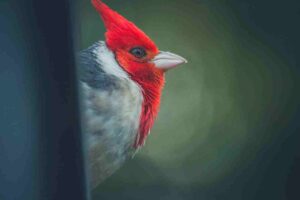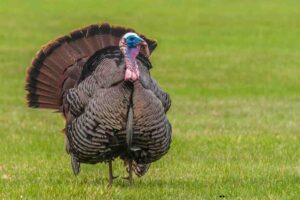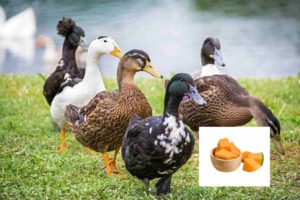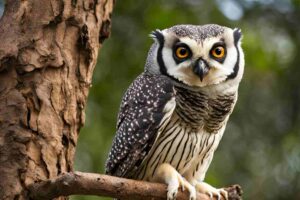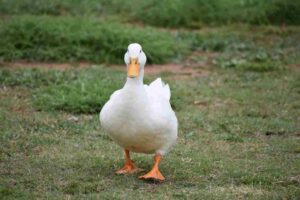Easter Egger chickens have gained popularity among poultry enthusiasts for their friendly personalities and remarkable variety of egg colors. Unlike standardized breeds, Easter Eggers are a mixed breed, which allows for a fascinating spectrum of feather colors, patterns, and egg hues. In this comprehensive guide, we will explore the colors associated with Easter Egger chickens, their physical characteristics, genetics, care requirements, and more.
What is an Easter Egger Chicken?

Easter Eggers are not a recognized breed by major poultry associations. Instead, they are a hybrid mix, often derived from blue-egg-laying breeds such as the Araucana or Ameraucana, crossed with other breeds. This hybridization results in a diverse range of physical traits and egg colors. They are known for their sweet temperament and adaptability, making them ideal for backyard flocks.
Egg Colors of Easter Egger Chickens

One of the most alluring features of Easter Eggers is their ability to lay eggs in various colors. The following are the primary egg colors associated with this breed:
1. Blue
Blue eggs are the hallmark of Easter Egger chickens. The shade of blue can vary greatly, ranging from pale sky blue to deeper, richer hues. The genetic makeup of the bird determines the specific shade. The blue egg color is a result of a pigment called oocyanin, which is deposited on the eggshell as it passes through the hen’s reproductive tract. Do you know what is main Types Of Toucans? If not Read the journey.
2. Green
Many Easter Eggers produce green eggs, which can range from light pastel green to darker olive shades. The green color occurs when a blue egg is laid by a hen that also carries brown pigment genes. The combination of blue and brown pigments results in a unique green egg.
3. Pink
Some Easter Eggers can lay eggs with a pinkish tint. These eggs are often lighter than brown eggs but carry a subtle blush that sets them apart. The pink color can be a result of varying amounts of brown pigment deposited on a base egg.
4. Brown or Tan
While less common, some Easter Eggers may also lay light brown or tan eggs. These eggs usually lack the unique color variations seen in blue or green eggs. Brown eggs are the result of a pigment called protoporphyrin, which is applied to the eggshell as it forms.
5. Mixed Colors
Because Easter Eggers come from a variety of parent breeds, it’s not unusual for some hens to lay eggs that are mottled or speckled, showcasing a mix of colors easter egger chicken the complete guide. This variety can make for an aesthetically pleasing egg basket, filled with a rainbow of hues.
Feather Colors and Patterns

In addition to their colorful eggs, Easter Eggers exhibit a rich variety of feather colors and patterns. The diversity in their appearance can be attributed to their mixed heritage. Here are some common feather colors seen in Easter Egger chickens:
1. Black
Many Easter Eggers sport black feathers, which can be solid or mixed with other colors. Black can range from a glossy jet black to a more muted charcoal shade.
2. Blue
Blue feathers are popular among Easter Eggers and can vary in intensity. Blue chickens often display a slate gray color that can appear stunning against the backdrop of a coop.
3. Brown
Brown feathers are common in Easter Eggers, often appearing in various shades, from light tan to dark chocolate. These variations can create a warm and inviting look.
4. Buff
Buff is a beautiful golden hue that adds brightness to the flock. Buff Easter Eggers can appear striking, especially when sunlight catches their feathers.
5. White
Some Easter Eggers may have pure white feathers or a mix of white and other colors. White feathers can provide a striking contrast to the vibrant colors of their eggs.
Common Patterns
Easter Eggers can also exhibit various feather patterns, including:
- Solid: A uniform color throughout the feathers.
- Speckled: A combination of colors creating a speckled effect.
- Laced: A pattern with contrasting edges on the feathers.
- Cuckoo: A striped or barred appearance, often seen in black and white combinations.
Genetics of Easter Egger Chickens
The genetics of Easter Egger chickens play a crucial role in determining their color and egg-laying capabilities. The gene responsible for blue eggs, called the Oocyanin gene, is inherited from blue-egg-laying ancestors like the Araucana and Ameraucana. The presence of the brown egg gene, which produces brown or tan eggs, comes from other breeds.
Inheritance Patterns
The inheritance of egg color in chickens is not straightforward. When breeding Easter Eggers, you may observe the following patterns:
- If an Easter Egger with the blue egg gene is crossed with a brown egg layer, the offspring may lay green or blue eggs.
- If both parents lay blue eggs, the offspring will likely lay blue eggs as well.
- The combination of different genes can lead to unexpected colors in the egg basket, making breeding Easter Eggers an exciting venture.
Factors Affecting Egg Color
Several factors can influence the color of eggs laid by Easter Eggers, including:
- Age of the Hen: Younger hens tend to lay eggs with more vibrant colors, while older hens may produce paler eggs.
- Diet: The nutritional makeup of a hen’s diet can impact egg color. A balanced diet rich in calcium and pigments can enhance the vibrancy of egg colors.
- Stress Levels: Stress can affect a hen’s overall health and egg production, potentially resulting in lighter or less colorful eggs.
Caring for Easter Egger Chickens
Easter Egger chickens are generally hardy and adaptable, making them relatively easy to care for. Here are some essential care tips for maintaining the health and happiness of your Easter Eggers:
1. Housing
Provide a clean, dry, and well-ventilated coop for your chickens. Ensure that there is enough space for each bird to move around comfortably. A safe outdoor run is also essential for allowing them to forage and exercise.
2. Bedding
Use appropriate bedding material, such as straw or wood shavings, to keep the coop dry and comfortable. Regularly change the bedding to prevent the buildup of waste and maintain a healthy environment.
3. Nutrition
Feeding your Easter Eggers a balanced diet is crucial for their health and egg production. High-quality poultry feed specifically formulated for laying hens should be provided. Additionally, supplement their diet with fresh fruits, vegetables, and protein sources such as mealworms or kitchen scraps.
4. Health Monitoring
Regularly check your chickens for signs of illness or distress. Look for any changes in behavior, appetite, or egg production. Vaccinations and parasite control should also be considered to maintain flock health.
5. Socialization
Easter Eggers are known for their friendly and sociable nature. Spend time with your chickens to encourage bonding and reduce stress. Providing them with enrichment, such as perches, dust baths, and toys, can also enhance their quality of life.
The Benefits of Keeping Easter Eggers
There are numerous reasons to consider adding Easter Egger chickens to your flock:
1. Colorful Egg Production
One of the primary attractions of Easter Eggers is their ability to lay a variety of colorful eggs. This diversity adds visual appeal to the egg basket and can be a conversation starter among friends and family.
2. Hardy and Adaptable
Easter Eggers are known for their hardiness and ability to thrive in various climates. They can adapt to both hot and cold weather, making them suitable for a wide range of environments.
3. Friendly Temperament
Easter Eggers are generally friendly and sociable birds, making them great companions for families and individuals. Their docile nature allows them to coexist peacefully with other breeds.
4. Good Layers
While egg production can vary among individual chickens, many Easter Eggers are reliable layers, providing a steady supply of eggs throughout the year.
5. Aesthetically Pleasing
With their diverse feather colors and patterns, Easter Eggers add beauty and charm to any backyard flock. Their unique appearance can enhance the overall aesthetics of your poultry setup.
Conclusion
Easter Egger chickens are a delightful and colorful addition to any poultry enthusiast’s flock. Their vibrant egg colors, diverse feather patterns, and friendly personalities make them a favorite among backyard chicken keepers.
Understanding the genetics behind their colors and providing proper care will ensure that your Easter Eggers thrive and contribute to a lively and colorful egg-laying experience.Whether you are drawn to their unique appearances, their ability to lay colorful eggs, or their friendly dispositions, Easter Eggers are sure to bring joy and character to your poultry keeping journey. Enjoy the diversity and beauty that these remarkable birds have to offer!

